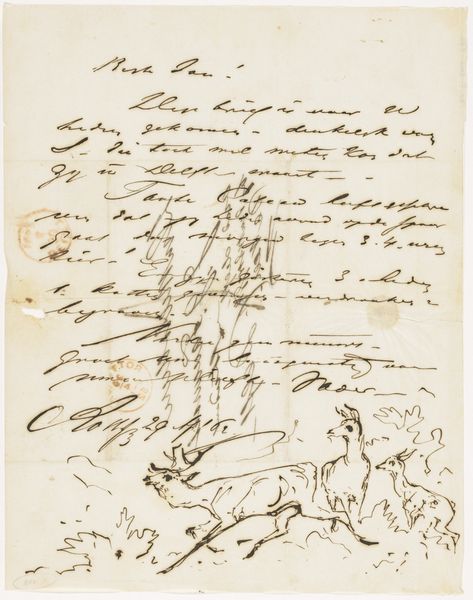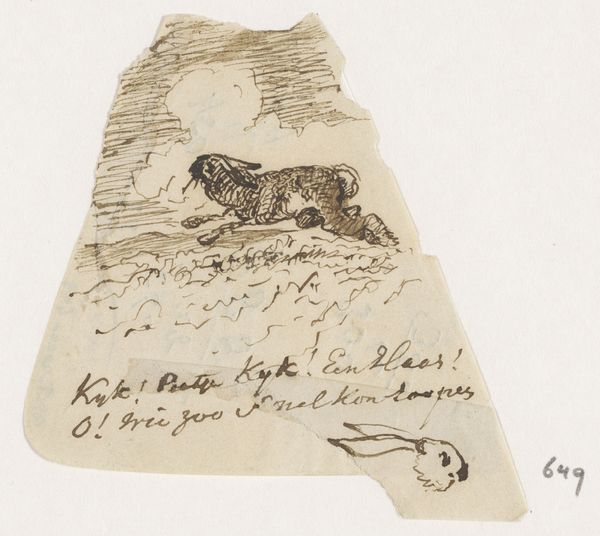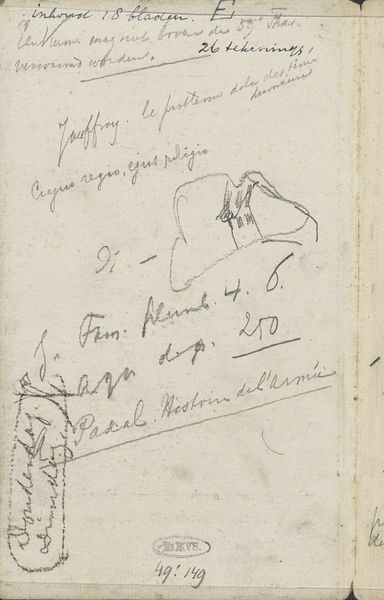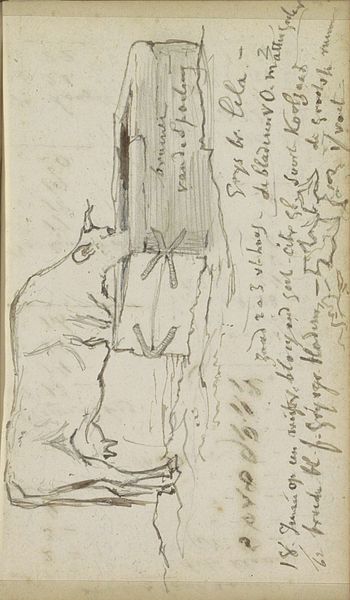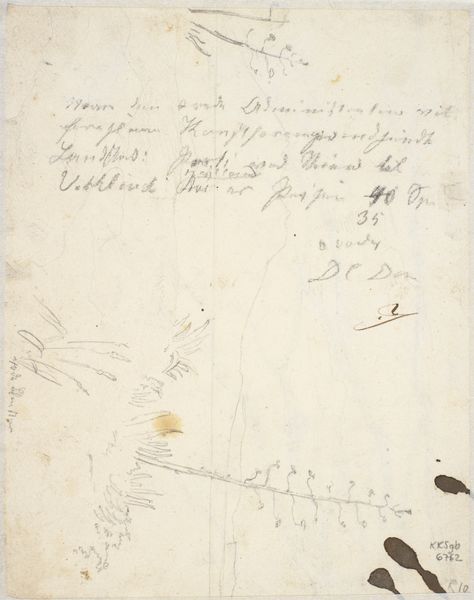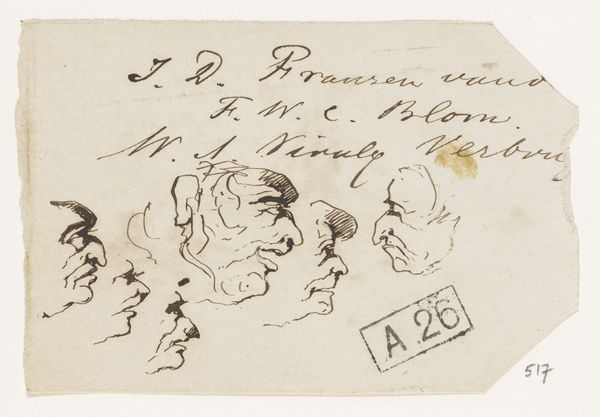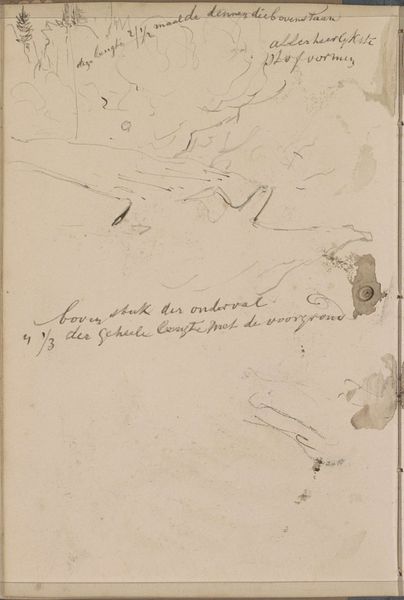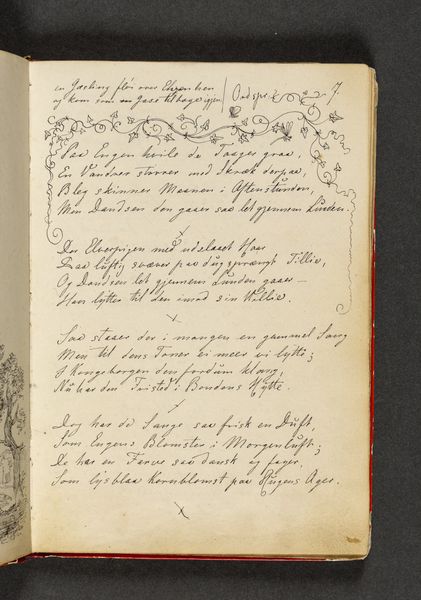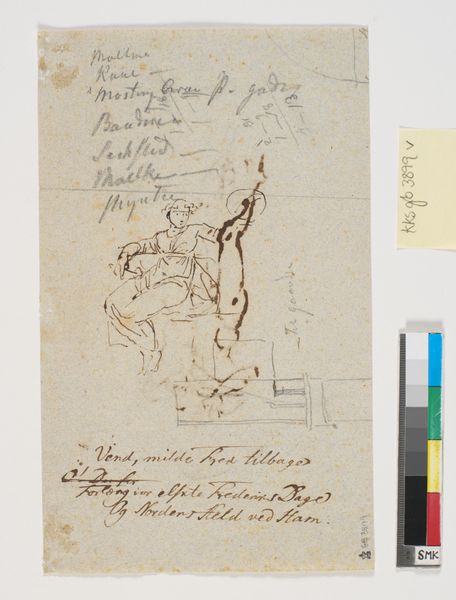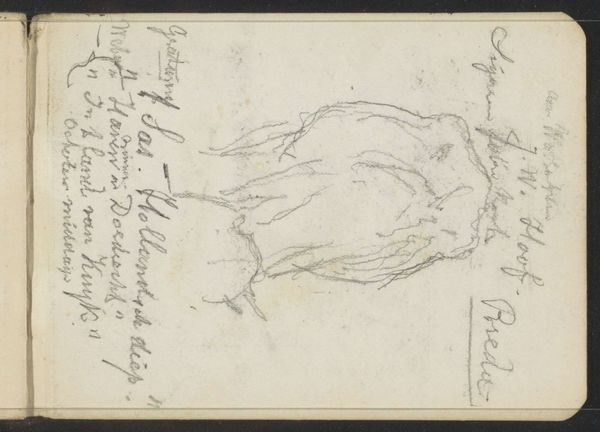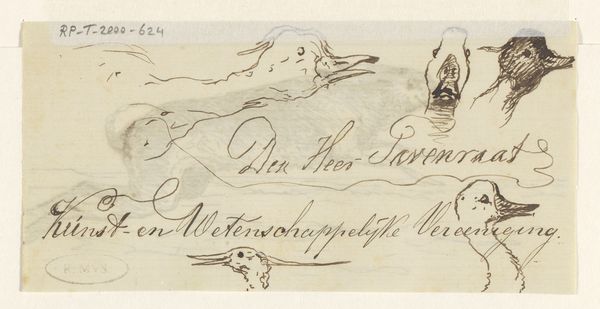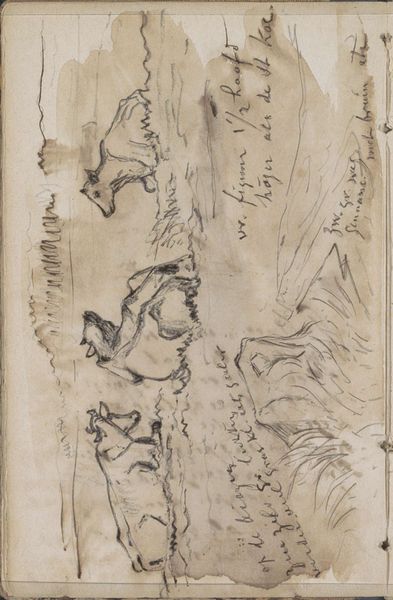
Dimensions: height 127 mm, width 108 mm
Copyright: Rijks Museum: Open Domain
Curator: Immediately unsettling, wouldn’t you say? There's something primal and disturbing about that pack of wolves howling, nearly skeletal, against that ambiguous terrain. Editor: You’re right. There is a rawness. It's all done in ink on paper; the starkness, almost a hurried quality to the line work, lends it a frenzied energy. We're looking at "Wolven en lied," which translates to "Wolves and Song." Created between 1840 and 1880, this drawing by Johannes Tavenraat is now housed in the Rijksmuseum. Curator: Tavenraat's choice of subject here resonates deeply with archetypal imagery of the wilderness. Wolves, throughout history, represent so much more than simple predators: freedom, wildness, but also fear, threat, the unknown. What song could these wolves be singing? Perhaps the lament of the lost? Editor: And the integration of text adds another layer, doesn’t it? “Ils dans la plaine... Ils dans les ténèbres.” “They dance in the plain… they dance in the darkness.” There’s a sense of foreboding, linking the animals with fate, death—"fils du trépas", sons of doom. Curator: Exactly! It merges visual and linguistic symbolic traditions. It begs the question: Are they the embodiment of that doom? Or are they merely observers, commenting through their song upon human transience? Editor: Well, considering Romanticism was in full swing during Tavenraat's active years, the theatrical drama makes sense. The raw emotion, the emphasis on subjective experience, and an awe of nature—the untamed kind— were central to Romantic artistic and literary circles. What social tensions could possibly feed these themes? Curator: It suggests perhaps a longing for an earlier time, before industrialisation overtook the land and collective identity became less intimate. Also the shadow side of progress-- anxieties about the natural world being slowly extinguished... This could serve as warning of nature’s revenge. Editor: Food for thought. Indeed, the symbolic charge in "Wolves and Song" speaks to lingering cultural fears as well as Romantic ideals regarding humankind and nature. A small piece but packed with symbolic weight. Curator: Absolutely. It allows the audience to project their anxieties about humanity's relationship with nature through powerful cultural memory encoded within these representations of familiar characters.
Comments
No comments
Be the first to comment and join the conversation on the ultimate creative platform.
